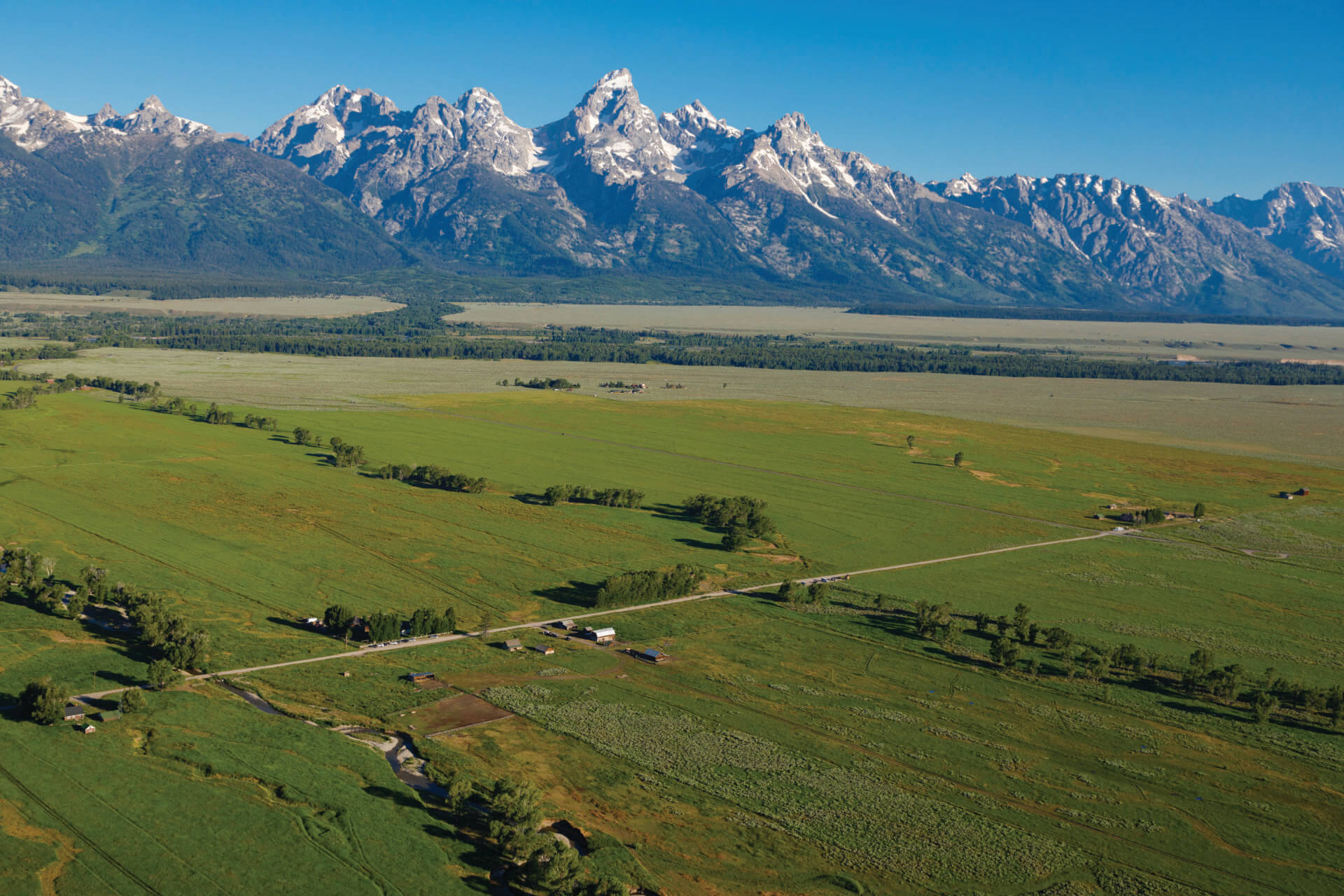Read The
Current Issue
Mormon Row
// By Dina Mishev
“Where’s the barn?” There are hundreds of barns in Jackson Hole, but ask this question of any local and they will all give the same answer: the T.A. Moulton Barn is on Mormon Row in Grand Teton National Park. More than a century old, this barn might be the most photographed in the world. With the Tetons rising sharply behind it, it does make for a gorgeous image.
But the barn, and the 30-some other buildings that remain on Mormon Row, are more than props. A $7.4 million multi-year public-private partnership now in its third year seeks to share the unique history of the area and the lives lived here by early white settlers. (Before white settlers arrived in Jackson Hole, 24 Native American tribes used this land.) The project also includes substantial preservation and rehabilitation work to the buildings.
A century ago, Mormon Rows dotted the West. “Mormon Row” was a colloquialism given because of the communities’ layouts—rather than isolated homesteads more typical of the place and time, Mormons organized their homesteads with their homes along one road and with fields behind. The first homesteaders arrived at Jackson Hole’s Mormon Row in 1896. The area thrived until the 1940s, when it became obvious that nearby Grand Teton National Park, which was founded in 1932, would likely expand. Mormon Row residents began selling their ranches to the NPS.
Today, Jackson Hole’s Mormon Row is the most intact of the Mormon Rows that remain. “Mormon Row is a popular place to visit, but when you’re out there standing around these old buildings, there is limited information about its importance,” says Leslie Mattson, president of the Grand Teton National Park Foundation, which seeks to raise $5 million for the project. “As cool as the buildings are, for me, it’s the history that truly makes it special. With the right interpretive elements, you can understand the hearty souls who came here and created a community.”
To date, the project has focused on the buildings themselves (some were almost at a point from which they could not have been preserved). Interpretive elements including signage, audio and video tours, and experiences on the National Park Service mobile app will come in 2025 and 2026. Also to come is a network of accessible trails and amenities. In the meantime, here’s some history about a handful of Mormon Row’s buildings.
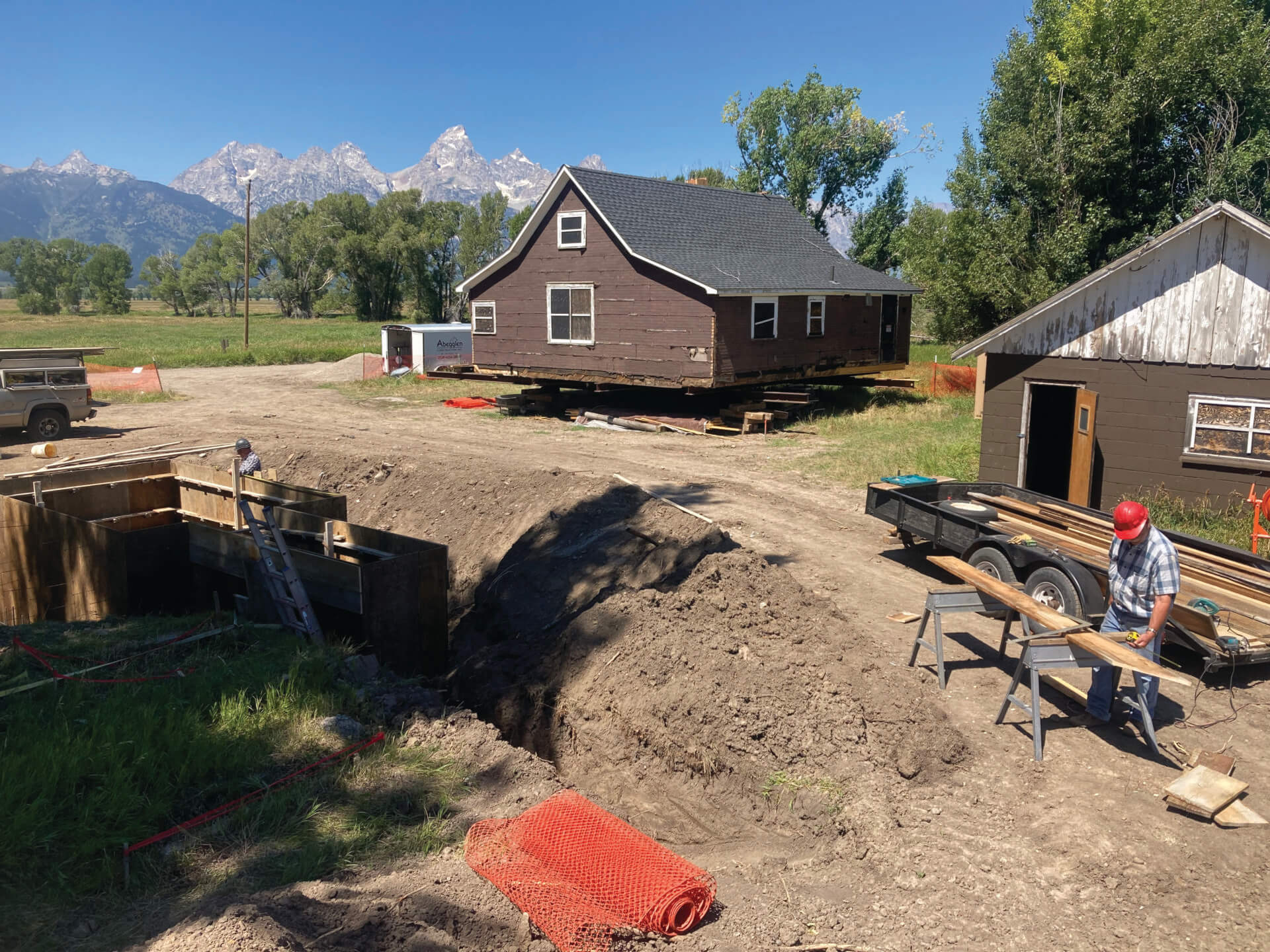
At one point, Mormon Row extended all the way south to the Gros Ventre River; today the Roy Chambers house is among the southernmost structures that still stand. One of the last occupied buildings on Mormon Row—Roy and Becky Chambers lived here until 1989—the house got a new foundation last summer. Over the next two summers ,the building will be rehabilitated and modern utilities installed so that it can provide housing for seasonal GTNP staff. “One of my favorite things about this building is its bright yellow kitchen,” says Kate Birmingham, GTNP’s branch chief of cultural resources. “It is definitely of its time—an early 20th century kitchen painted in a bold color.” While the appliances will be updated, Birmingham says the yellow will remain. “It contributes to the building’s historical significance,” she says.

T.A. Moulton, brother to John Moulton, homesteaded here as a bachelor in 1908 and in 1912 brought his new wife, Lucile, and newborn son, Clark, to the Row. Construction on the original part of the barn—a flat-roofed, 18-by-24-foot box, 12 rows of logs in height, built to shelter the family’s horses, Don and Saylor—started the following year. In 1928, Moulton and son Clark added a peaked hayloft. In 1934 and 1938, the south and north lean-to additions were constructed. Everything was built with lodgepole cut from nearby Timber Island skidded to the site using a team of horses and also with lumber bought at a local sawmill. Deteriorated to the point of near-collapse by the first decade of this century, the barn was stabilized and got a new roof about a decade ago.
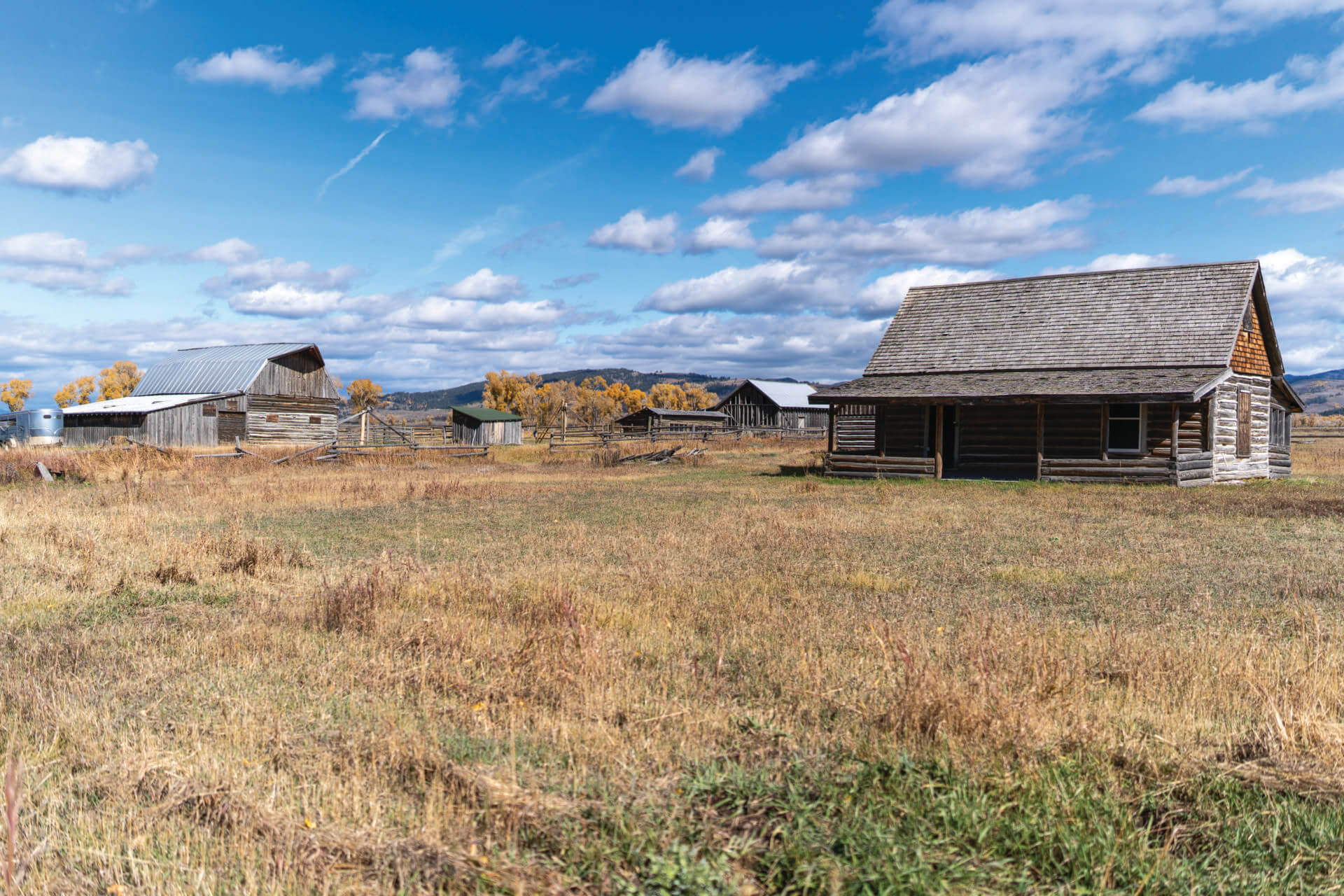
Andy Chambers built this two-story log cabin in 1916 on a relinquished claim that he had purchased in 1912. Today the cabin and its surrounding outbuildings are the most intact homestead on Mormon Row. In 1918, Andy married Ida Kneedy, and the couple had seven children, including Roy, whose home got a new foundation last year. Roy was born in this log cabin, which will receive exterior renovations in 2025.
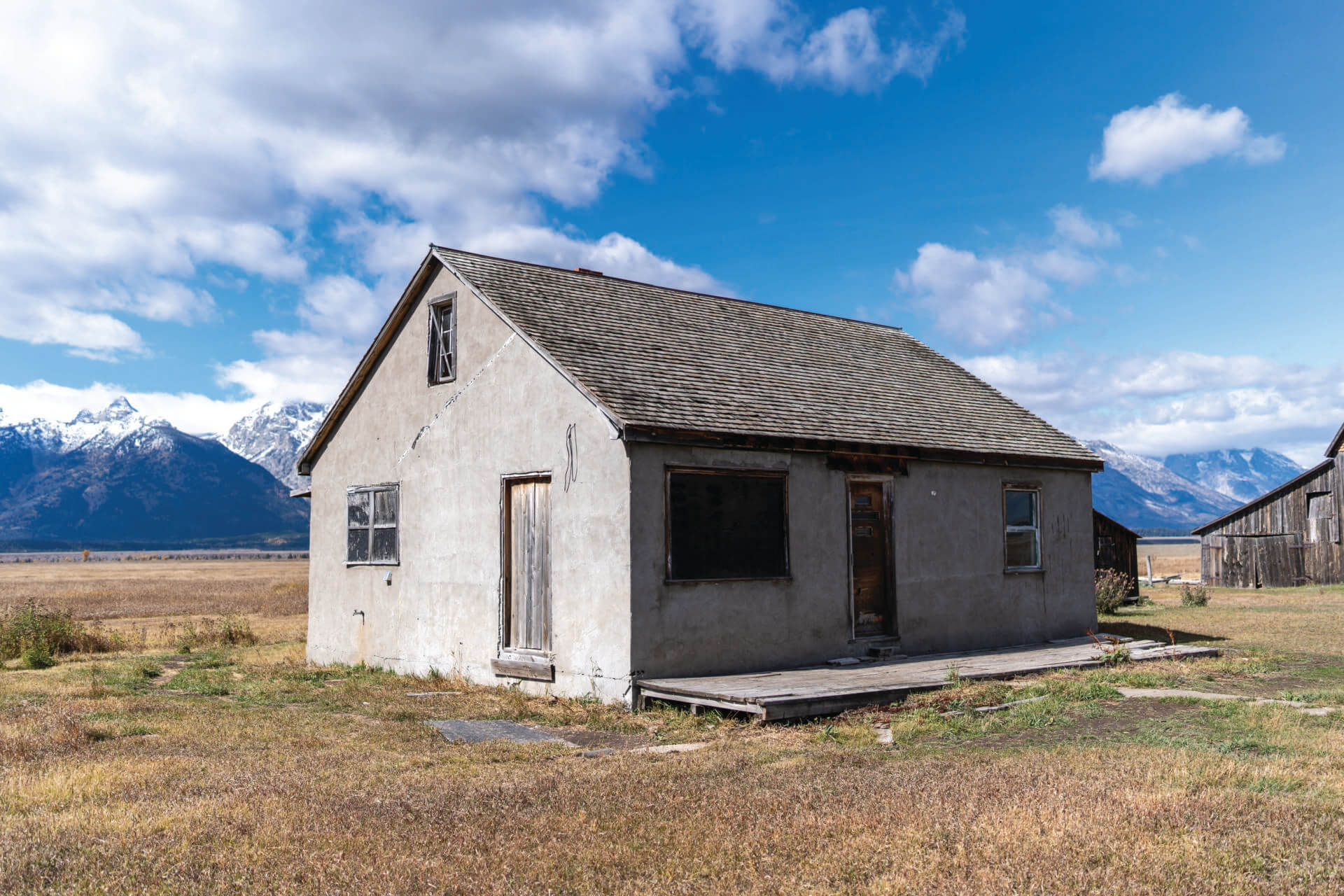
At the northernmost end of Mormon Row, the Reed Moulton/Joe Heninger property was one of five homesteads irrigated by the Mormon Row Ditch, which was built by Heninger and his neighbors starting in 1929. The house standing today was built around 1908 by Thomas Murphy, who sold the property to Heninger in 1920. Heninger sold to neighbor John Moulton in 1945, and John Moulton gave the ranch to his son, Reed Moulton, who lived there with his wife Shirley. By 1953, Grand Teton National Park had bought this ranch and the adjacent John Moulton Ranch, although three generations of Moultons continued to live here until 1973, when Reed and one of his two daughters died in a car accident.
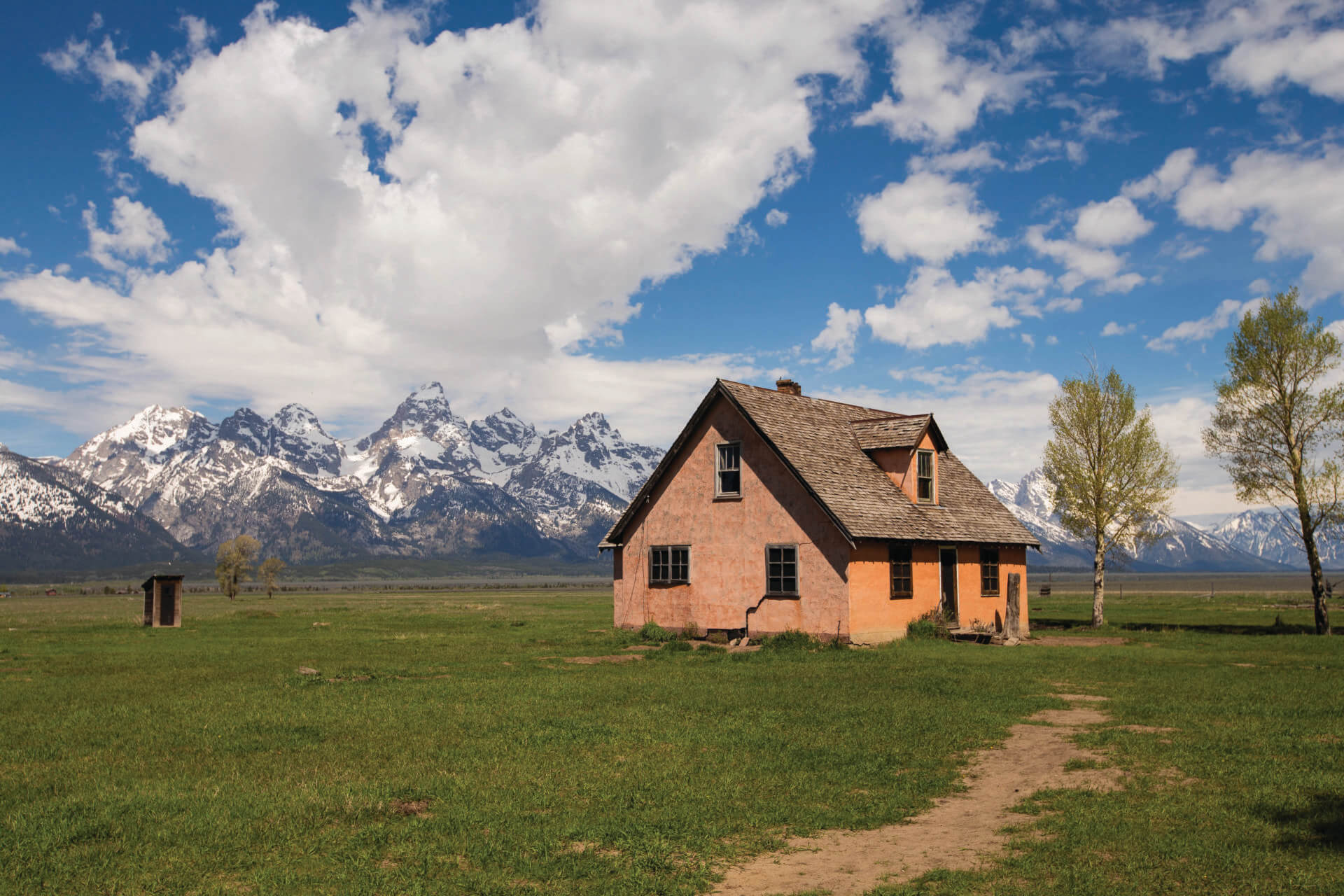
Constructed in 1938, the Pink House was lifted and put on a foundation in 2021. And then the hard work started: “The most difficult part of this building was color matching,” Birmingham says. “We took color samples from various places, and the first color that came back looked more terra cotta. I was very concerned. I didn’t want to be the person that turned the pink house into the orange house.” After more than one dozen different colors, a match was finally found. Don’t just admire this building’s color though—take the time to look in the windows. “There are at least 33 different types of wallpaper in this house,” Birmingham says. “Bartha [Moulton, who lived here with her husband, John] was known for redecorating every year.” Fun fact: John Moulton, brother of T.A. Moulton, painted this house its distinctive color as a welcome-home surprise for Bartha, who had been in the hospital. He knew she had wanted to repaint the house. John picking salmon pink as the color was a mix-up. Rumors are that Bartha hated the color but kept it because she loved John’s thought behind it.
JH

